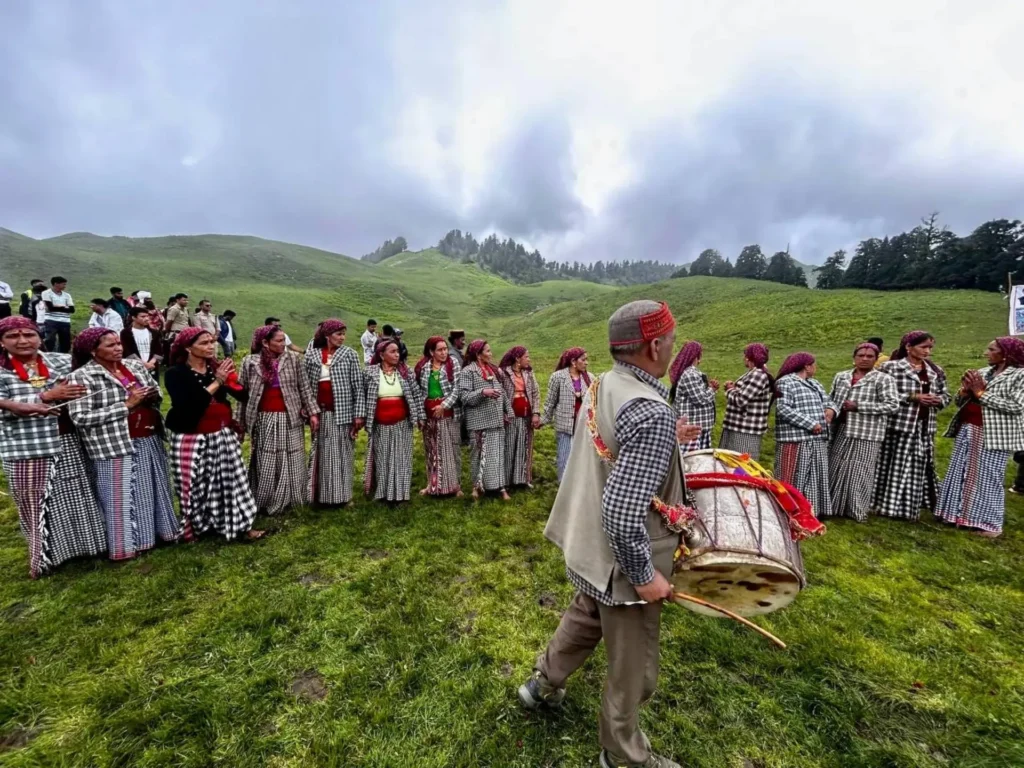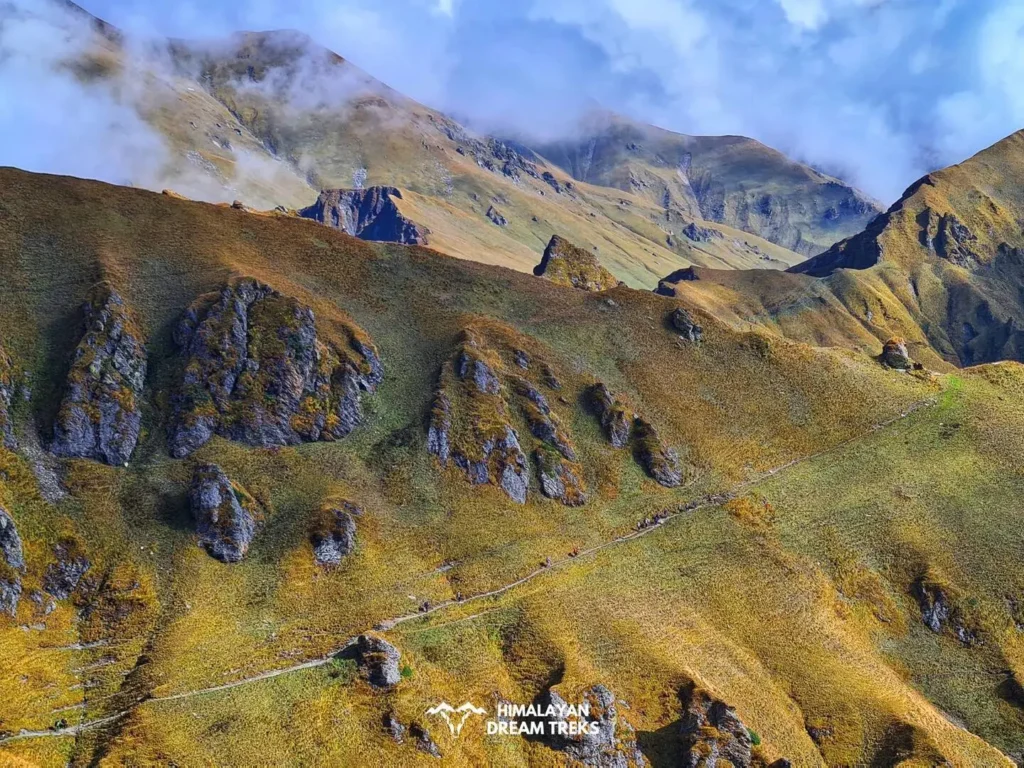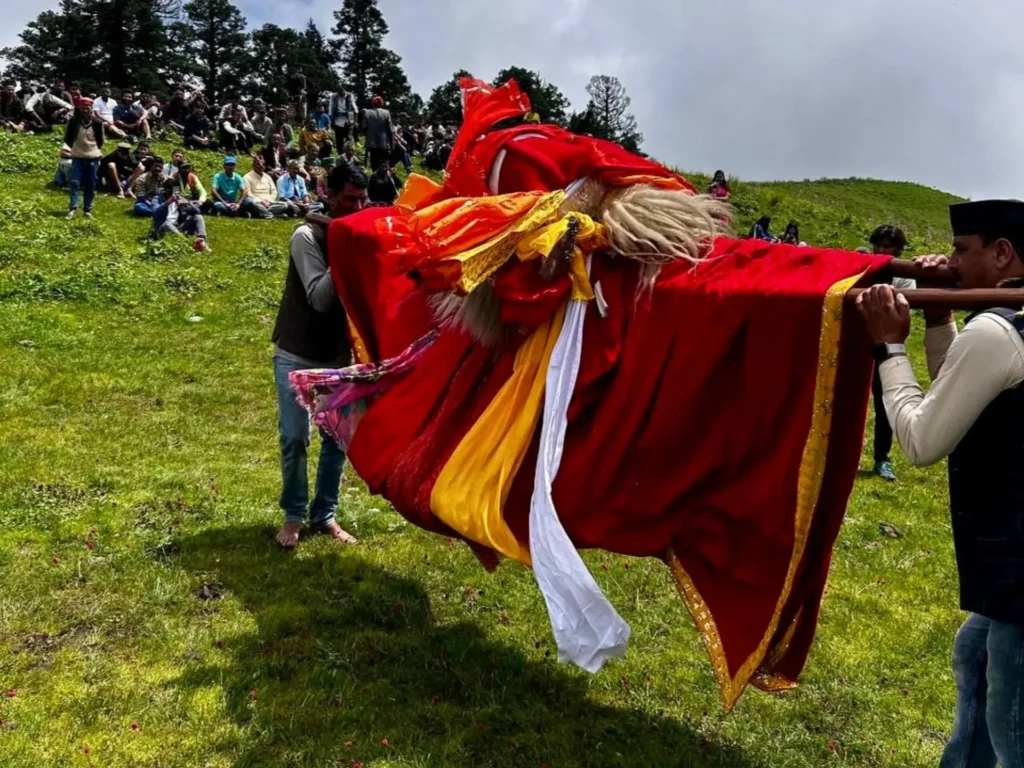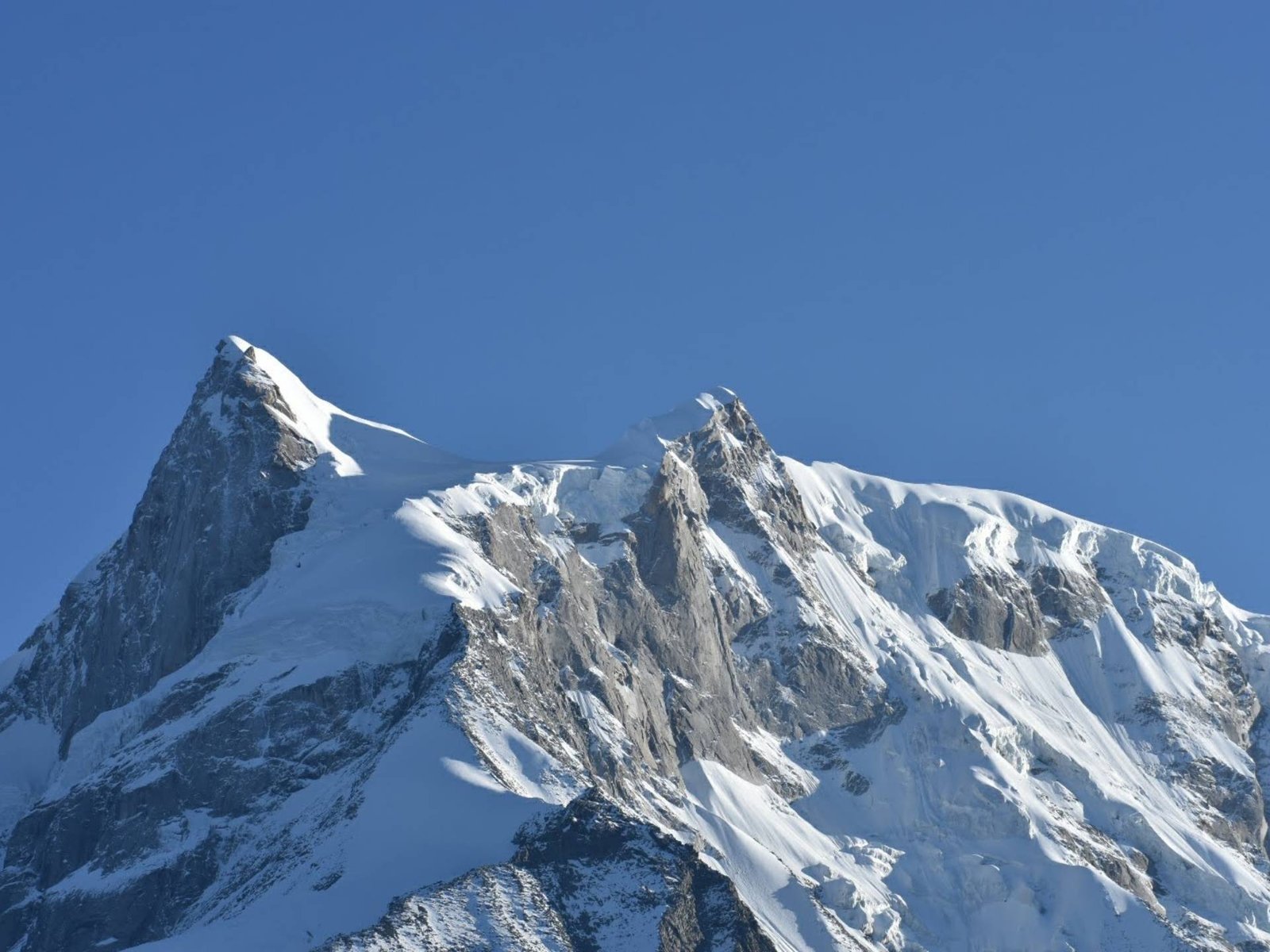With the rise in demand for ecotourism all over India, Uttarakhand comes into the center of one of the important destinations for trekking. Due to having beautiful hilly terrain and the heart touching scenic beauty of Uttarakhand attracts trekking lovers and increases the demand for ecotourism sports. And this tends to the state as one of the popular choices for trekking.
As trekking acts as one of the important growth providers of Uttarakhand’s GDP, it also helps its local community. Uttrakhand has a vast number of trekking sites due to this it is emerging as a tourist destination for adventurous sports and helps in the sustainable tourism development of the state and its Local Community. Now in this article, we want to highlight the importance of trekking into Uttarakhand’s Local Community and how it is changing their life.

Economic Impact
Uttarakhand is famously known for its pilgrimage tourism which has been practiced here for centuries. And now modernization has also touched the local part of Uttarakhand and this pilgrimage tourism has evolved into a new face in the form of mass tourism. This includes mountaineering, trekking, and many other adventurous sports. But here our main focus is on trekking and its economic impacts on its local community.
Notable trekking destinations like Gaumukh Tapovan, Sunderdhunga, Dodital, Kalindi Khal, and Binsar have positioned Uttarakhand as a hub for adventure tourism. This industry, characterized as a smog-free and lucrative sector, stands as a pivotal source of revenue for both the state’s economy and local communities.
Trekking in Uttarakhand acts as a key pillar of tourism and it has a multiplier impact on the state’s economy. It acts as a key employment generator and increases the living standard of local people or their communities. And also helps in countries’ national income (Tourism Policy 2023).
The Era of mass tourism in the core area of trekking has a very slight and enormous effect on the Himalayas. And in its local economy. According to Rangan report (2000), Garhwal earns between 10-15% of its revenue from taxes and levies imposed on adventurous tourism like trekking and pilgrimage each year.
The final report of UTD master plan 2007-2022, the major sources of international tourists for Uttarakhand were from the USA, UK, Australia, and other European countries. And trekking is also acting as a main source of attraction for these tourists which is about 51.3%. The money spent by the tourists who are coming for adventurous activities like trekking and other adventures has diverse effects on the local economy.
It scales up the economy and so-called multiplier effect like jobs are created, capital is accumulated and local workers that used to be dependent on subsistence farming start their businesses on these trekking routes and they act as a trekking guide or selling souvenirs to trekkers. This business in turn employs the local community as guides or workers thereby indirectly benefiting tourist money.
As a part of ecotourism trekking helps in the overall improvement of local living standards through better healthcare, education, and building of infrastructure. And also one of the important impacts of this industry is that it helps Uttarakhand’s biggest challenge which is unemployment so this type of tourism offers a lucrative and interesting avenue for local youth for an income source.
The economic benefits of trekking in Uttarakhand extend beyond the scenic landscapes to the local communities along the pilgrimage routes. As the trekking journey from Rishikesh to Badrinath and Kedarnath, the flourishing of small tea stalls, dhabas, and shops along the roadsides illustrates a substantial financial boost from daily tourist activities.
While there are challenges associated with the economic impact of trekking on local communities, the positive contributions, such as job creation and improved living standards, underscore the importance of sustainable and responsible tourism practices. Balancing economic benefits with cultural preservation becomes crucial for the long-term prosperity of these regions.
Trekking is helpful for the Cultural Exchange
Trekking not only explores the landscapes of remote regions but also serves as a gateway to cultural exchange between trekkers and local communities. The high-altitude treks take individuals through less-explored areas where Indigenous communities reside, providing an immersive experience of their daily lives and cultural practices.

- Linguistic Diversity: Trekkers often encounter diverse languages during their journey, learning basic phrases or greetings. This exposure fosters an appreciation for the linguistic tapestry of the world, emphasizing the role of language in preserving cultural identity.
- Culinary Exploration: Local foods and traditional recipes along the trekking route offer a flavorful insight into the cultural heritage of communities. Sharing meals with locals becomes a cultural exchange, allowing trekkers to understand the significance of food in different cultures.
- Artistic Expressions: Trekkers may witness or participate in local craftsmanship, such as weaving, pottery, or traditional dance. Engaging with these artistic expressions provides a deeper understanding of their cultural significance, enhancing the overall cultural exchange.
- Historical and Cultural Sites: Ruins, ancient structures, or pilgrimage sites encountered during trekking hold cultural and historical value. Trekkers gain an appreciation for the stories embedded in these places, connecting them to the cultural tapestry of the region.
- Cultural Norms and Respect: Understanding and adhering to local cultural norms, whether related to dress, behavior, or religious practices, becomes integral to the trekking experience. This respect builds an appreciation for the diversity of cultural expressions.
- Cross-Cultural Connections: Trekking often brings together individuals from various backgrounds and cultures. The shared experience of trekking creates a platform for cross-cultural connections and exchanges. Trekkers learn from one another, share stories, and celebrate the diversity within the trekking community itself. In essence, trekking goes beyond the physical challenge; it becomes a journey of cultural discovery, connecting people across borders and fostering a deeper understanding and appreciation for the rich diversity that exists in the world.
Trekking contributes to infrastructure development
Tourism, particularly fueled by the allure of trekking, plays a pivotal role in propelling infrastructure development. The economic impetus generated by the influx of trekkers catalyzes strategic investments, resulting in improved roads, accommodations, and facilities that benefit both tourists and the local community.
1. Enhanced Road Networks: The growing popularity of trekking destinations necessitates better connectivity. To accommodate this, governments often invest in upgrading existing roads or constructing new ones, providing efficient transportation corridors to and from trekking sites. For example, the Char Dham Railway connects the four holy places in Uttarakhand states namely Badrinath, Kedarnath, Gangotri, and Yamunotri. This not only eases access for tourists but also enhances overall connectivity for local communities.
2. Accommodation Facilities: As trekking destinations gain prominence, there is an increased demand for diverse and comfortable accommodation options. This drives the development of hotels, guesthouses, and eco-friendly lodges, offering trekkers a range of choices. In Uttarakhand, some top hotels and guesthouses are already established but recently at the investor summit new and also big players in the hospitality industry have pledged to invest in this sector. Simultaneously, it opens avenues for local entrepreneurs to invest in hospitality, creating jobs and economic opportunities.
3. Community Homestays: Trekking destinations often witness the rise of community homestays, providing tourists with an authentic local experience. This not only generates income for the residents but also fosters cultural exchange. The establishment of these homestays becomes a key element in the infrastructure network, promoting sustainable and responsible tourism.
4. Facilities for Adventure Tourism: With the surge in adventure tourism, facilities like trekking gear shops, guide services, and adventure activity centers emerge. The development of these facilities not only caters to the immediate needs of trekkers but also contributes to the economic vitality of the region.
5. Rest Stops and Amenities: Trekking routes may witness the creation of rest stops, information centers, and basic amenities along the trails. These facilities improve the overall trekking experience for tourists while also ensuring the safety and well-being of the local community.
6. Environmental Conservation Measures: Sustainable trekking initiatives often involve infrastructure projects focused on environmental conservation. This includes waste management systems, eco-friendly toilets, and efforts to preserve the natural beauty of the surroundings. These initiatives ensure that tourism development is ecologically responsible.
7. Local Skill Development: The demand for tourism services, from guiding to hospitality, necessitates skill development within the local community. Training programs and workshops geared towards enhancing these skills not only support tourism but also empower locals with employable capabilities.In essence trekking-driven tourism acts as a catalyst for holistic infrastructure development. The improvements extend beyond serving the immediate needs of tourists, creating a lasting impact on the overall quality of life for residents. By fostering sustainable practices and community engagement, trekking destinations can become models of responsible tourism development.

Conservation Efforts in Trekking
- Safe Spaces: Some trekking areas are like nature’s homes, and rules help keep them safe.
- Counting Friends: We check how many trekkers can visit without hurting nature. Rules limit the number to keep things balanced.
- No Litter Policy: Everyone follows rules to keep trekking spots clean. Communities help with waste collection and recycling.
- Eco-friendly Stays: Rules encourage eco-friendly places to stay, using green tech and saving energy and water.
- Local Helpers: People who live there are nature’s helpers. They learn to protect wildlife and trees, and everyone benefits.
- Learning Together: We teach everyone, including locals and trekkers, why nature is special and needs our care.
- Community Benefits: Some places give money to local communities from tourism. This motivates them to keep nature safe.
- Building Rules: Rules make sure we don’t build things that harm nature. We want our special places to stay beautiful.
- Watching Out: People keep an eye on trekking spots to make sure everyone follows the rules. Locals help as guides and guards.
By working together, we make sure our trekking spots stay happy and healthy for everyone to enjoy, now and in the future.
Community Empowerment through trekking
1. Community Trek Guides: Train locals as trekking guides, fostering sustainable tourism and providing economic opportunities.
2. Culinary Trek Experience: Collaborate with villagers to incorporate local cuisine, creating jobs for cooks and enhancing the trekking experience.
3. Trekking Crafts Cooperative: Form a local artisan cooperative, promoting unique handicrafts and supporting community businesses.
4. Infrastructure for Locals: Invest in community-owned guesthouses and trail improvements, creating jobs and boosting local economies.
5. Educational Trek Initiatives: Collaborate with schools for educational trek experiences, supporting local education and cultural exchange.
Challenges of Trekking’s Impact on the Environment:
1. Deforestation Debate: The impact of tourism, particularly trekking, on the ecology of Uttarakhand has sparked debates, with concerns about deforestation. While some argue that the Himalayan ecosystem is rapidly degrading, others find these claims oversimplified and distorted.
2. Pressure on Forests: The increasing number of tourists in the region exerts pressure on forests along the main trekking corridors. Clustering of shops, tea stalls, hotels, and restaurants around popular sites adds to environmental strain.
3. Garbage Accumulation: Waste disposal poses a significant challenge, with estimates suggesting that a single trekking group can generate 15kg of non-biodegradable or burnable waste during a 10-day trek. The Everest region is labeled as “the world’s highest junkyard” due to extensive garbage along tourist trails.
4. Human Waste Contamination: Improper disposal of human waste poses threats to water sources. Even correct burial in designated “cat holes” becomes problematic due to the sheer volume of people. Areas around popular campsites can resemble “moonscapes” due to the large number of these dug holes.
5. Trail Degradation: The escalating number of tourists contributes to trail degradation in the Uttaranchal Himalayas. Poorly maintained trails lead to soil erosion, deep ruts, and the formation of alternative paths, causing damage to vegetation cover and potential habitat loss.
6. Pollution of Water Sources: Campsites often face pollution, with reports of garbage dumps in undeveloped areas and contamination of holy rivers like Vishnuganga with feces and sewage. Trekking-induced pollution extends to creeks and rivers, affecting both aquatic life and the local ecosystem.
In summary, the environmental impacts of trekking in the Himalayas encompass deforestation concerns, pressure on forests, extensive waste generation, water pollution, and trail degradation, highlighting the need for sustainable practices to preserve the fragile ecosystem.

Community engagement through trekking
In Sarmoli village, Uttarakhand, the Himalayan Ark Homestay program, initiated by Malika Virdi in 2004, exemplifies successful community engagement through trekking. Entirely run by women, this program not only provides unique experiences for visitors but also creates livelihood opportunities, empowers women collectives, and fosters environmental conservation. Sarmoli’s journey showcases the transformative impact of sustainable tourism on individuals, families, and the broader community.
In conclusion, trekking in Uttarakhand not only contributes significantly to the state’s economic growth but also plays a crucial role in transforming the lives of its local communities. The economic impact is evident through job creation, improved living standards, and the overall enhancement of the state’s GDP. The cultural exchange facilitated by trekking fosters understanding and appreciation for the rich diversity of the region, showcasing linguistic, culinary, artistic, and historical aspects.
Furthermore, trekking catalyzes infrastructure development, driving investments in road networks, accommodation facilities, and community homestays. The positive ripple effects extend to environmental conservation, with initiatives focused on preserving nature, waste management, and eco-friendly practices.
However, it’s essential to address the challenges associated with the environmental impact of trekking, such as deforestation, waste accumulation, and water pollution. Sustainable practices, community involvement, and responsible tourism are crucial in mitigating these challenges.
The cases of Sarmoli village exemplify successful community engagement, demonstrating how trekking initiatives can empower local communities, particularly women, and contribute to environmental conservation. As Uttarakhand continues to thrive as a trekking destination, a balanced approach that prioritizes both economic benefits and environmental sustainability will ensure the long-term prosperity of the region and its communities.
References:
1: https://www.rural.tourism.gov.in/Sarmoli-Village-Gold.html
2: https://www.iccaconsortium.org/people/malika-virdi/
3: https://uttarakhandtourism.gov.in/sites/default/files/2023-06/Tourism-policy-2023.pdf
4: https://uttarakhandtourism.gov.in/sites/default/files/document/type/volume-1-executive-summary.pdf
5: Tourism Sector in Uttarakhand: A Brief Overview after the State Formation
6: TOURISM: A SOURCE OF ECONOMIC DEVELOPMENT IN UTTARAKHAND
8: IND: Infrastructure Development Investment Program for Tourism – Tranche 3


Leave a Comment